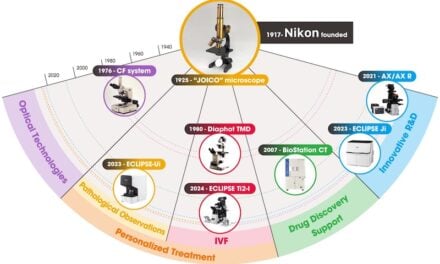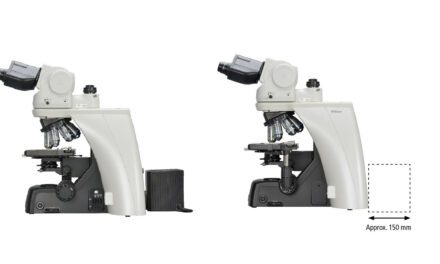The technology used to manufacture the new X Line series objectives from Olympus, Waltham, Mass, improves image quality by creating lenses with shapes that are difficult to make with other methods. The same technology is used to manufacture the company’s super-resolution UPLAPO-HR objectives and TIRF microscopy objectives.
It is difficult to improve one area of an objective lens, such as numerical aperture, without tradeoffs in another area, such as chromatic aberration correction. However, X Line objectives overcome the common tradeoffs by simultaneously improving optical performance in three critical areas:
- Expanded flatness for uniform images from the center to the edge with an observation area1.7 times greater than conventional objectives (mean value for the X Line series).
- Exceptional color accuracy during brightfield and multicolor fluorescence imaging with chromatic aberration correction from violet to near-infrared (400–1000 nm).
- Excellent image quality, even with weak excitation light, with a higher numerical aperture (up to 1.45) for reduced fluorescence fading and phototoxicity during time-lapse experiments.
With these advances, users can acquire bright, high-quality images throughout the entire field of view, helping to improve quantitative data acquisition and the speed of creating large, stitched images. For pathologists who frequently work with stained samples, accurate color reproduction improves image reliability.
The UPLAPO-HR super resolution and TIRF objectives are the first plan apochromat objectives to achieve a numerical aperture of 1.5, enabling bright, high-resolution observations of even weak excitation light. During super resolution imaging, the objectives enable users to locate an object of interest using a wider field of view and then smoothly resolve down to a higher magnification.
For more information, visit Olympus.





